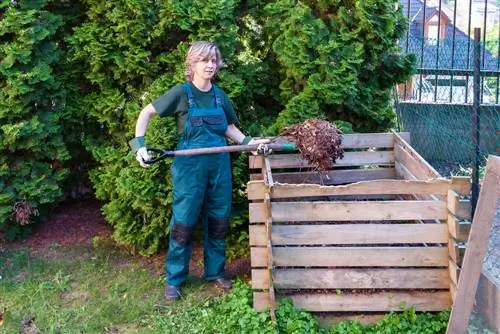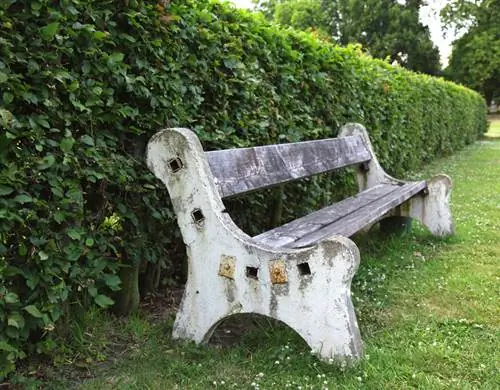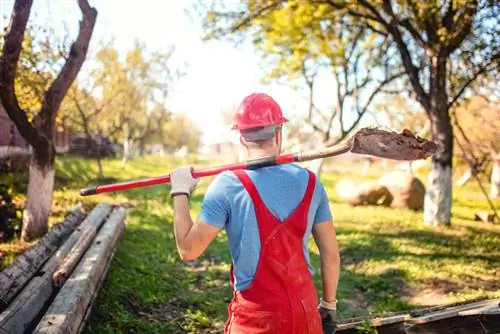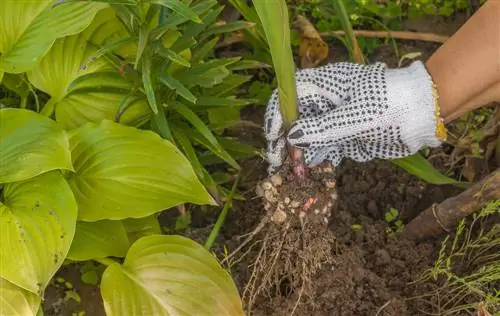- Author admin [email protected].
- Public 2023-12-16 16:46.
- Last modified 2025-01-23 11:21.
So that the compost becomes available quickly and contains lots of nutrients, it needs appropriate care. This includes digging, which is done at least once a year. When should digging be on the agenda and how do you go about it?
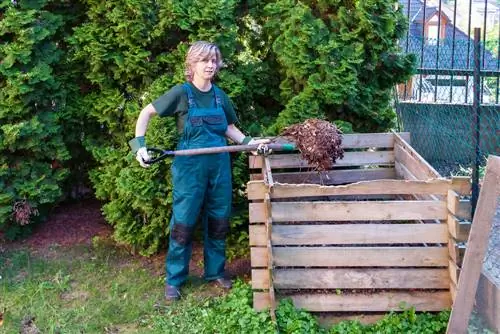
When and how should the compost be dug up?
Digging up the compost should be done at least once a year, ideally in the spring after thawing. Mature compost is sieved out and the layers are shifted from the outside to the inside and from top to bottom to ensure even rotting.
Why dig up the compost?
Compost rots very unevenly. The temperatures are highest inside, so rotting occurs much faster there.
By digging, you mix the components together well. This stimulates the microorganisms particularly strongly.
Incidentally, you also make it unpleasant for unwanted compost inhabitants such as rats to stay in the compost heap.
The best time to dig
How often you dig up the compost is a question of time and effort. But once a year you should grab a shovel.
The best time for the first digging of the year is spring, when the compost has thawed.
Then you will have ripe compost available in the spring to fertilize your garden plants.
Working with two compost piles
Savvy gardeners have at least two compost piles in their garden. The almost ripe compost is stored in one, while the other is freshly filled.
When digging, the partially rotted components are sieved out and put back into composting.
How to properly dig up the compost
When digging up the compost, it is important to sift out mature compost and shift the layers from the outside to the inside and from top to bottom. This creates an even rot. The compost ripens faster.
- Put the compost in scoops into the sieve
- screening out mature compost
- relayer immature material
- “inoculate” with ripe compost
The sieved, not yet completely rotted material is placed on the empty composter. Pour a few scoops of mature compost over the top. This so-called “vaccination” acts as a starting aid and brings the useful microorganisms into the new compost heap.
The mature compost is either worked into the soil or spread around the garden plants.
Tip
A large garden sieve (€32.00 on Amazon) is essential for proper composting. The finished compost falls through the coarse-mesh sieve, while immature material remains on top. You can easily make the sieve yourself from rabbit wire and wooden slats.

